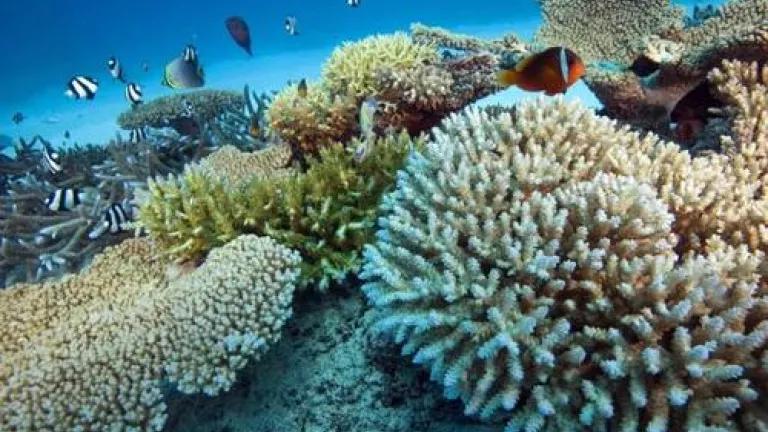
Local threats + global stresses = endangered reefs. That’s the alarming equation made plain in a report released last week by the World Resources Institute (WRI)—an equation all too familiar to those working to protect oceans. Reefs are biologically crucial, “the rain forests of the sea,” as the report says: Though they cover just a tenth of 1 percent of the ocean, they support a quarter of its species. Not surprisingly, then, they are economically critical, too: 275 million people live less than 20 miles from reefs, which protect shorelines and nurture a quarter of all the fish caught in developing countries. Yet reefs face severe risks from overfishing, coastal development, and pollution, as well as from climate change.
Photo: Dr. Paddy Ryan
According to the report, Reefs at Risk Revisited, the number of reefs threatened by some combination of local or global issues has increased by 30 percent worldwide since 1998. For instance, nearly twice as many reefs as before now suffer from overfishing and destructive fishing practices (like the use of explosives), often on top of pre-existing threats, such as climate change. As Al Gore notes in the report’s introduction, “Every day we dump 90 million tons of carbon pollution into the thin shell of atmosphere surrounding the planet.” Our emissions are warming the ocean, causing corals to expel the colorful algae living symbiotically within them—resulting in coral bleaching. Not only that, but a quarter to a third of our CO2 emissions dissolve into the ocean, causing an acidification that is reducing aragonite, a form of carbonate, available in seawater. Corals need ample aragonite to build their beautiful, intricate skeletons, but by mid-century, the report warns, just 15 percent of reefs will inhabit water where there’s enough aragonite for new coral growth. It amounts to a kind of global osteoporosis. As we pump CO2 into the “thin shell” above us, we’re thinning actual shells in our oceans. Couple acidification with warming water and, according to the WRI report, 90 percent of the world’s reefs—often thought of as the ocean’s canaries—will be threatened within 20 years.
Curbing global CO2 emissions is the challenge of our times, and there are no easy solutions. We need to continue to develop and call for clean energy technology if we are to save our reefs and seas. To this end, among other NRDC efforts, NRDC’s Oceans and Energy teams are currently working to support the development of properly sited offshore renewable energy projects off the East Coast. Simultaneously, reef resilience can be enhanced by thinking locally, limiting pollution, and stopping overfishing. For example, just 27 percent of reefs are currently within Marine Protected Areas, the ocean’s version of national parks. We can do better. If we protect our reefs in tangible ways, we give them a chance to survive climate change. It will “buy time,” as this new report puts it, bluntly, as we work on our emissions. Just as a healthy person can fight off an illness, healthy reefs might be able to do the same.
For more on acidification, watch NRDC’s short video, Acid Test.
And for a several ways to help reefs, take a look a this other Switchboard post, “Four Steps to Healthy Coral.”
